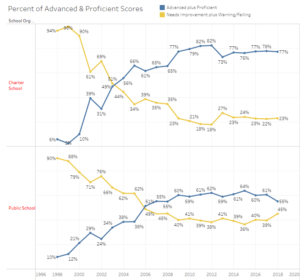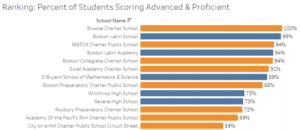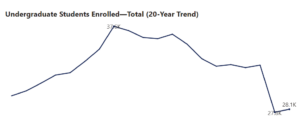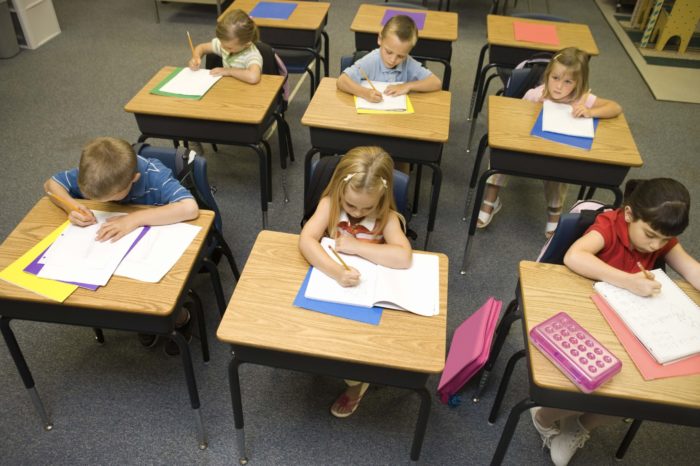Charter School Success: Importance in Suffolk County and College Enrollment
Background
When people look at public education in Massachusetts, it’s hard to complain. A 1993 Education Reform Act made our district schools the best in the nation, and also introduced charter schools and the MCAS tests. Charter schools, mostly composed of low-income, POC students, were created to fight disparities in funding and achievement. For example, Wellesley was spending about $25,000 per student, while Mattapan was only receiving $6,000. Today, the majority of urban students are attending schools in the bottom 20 percent of performance.
Fortunately, charter schools provide a high-quality option for these students. Especially in an area like Suffolk County, the most diverse county in the state, charter schools are needed to ensure that students can get an education that is on par with what those in the suburbs receive. The results can be seen through their MCAS scores, where Suffolk County charter school students perform on par with students in Weston and Wellesley.

Mathematics MCAS scores in Suffolk county, grade 10, 2017-2018
Source: MassReportCards
Note: “Public School” refers to district schools
MCAS Performance
Compared to their traditional district school peers in the county, charter school students outperform in every subject. Despite being only 13 out of the 44 schools in Suffolk county, charter schools have 10 out of the top 16 performing schools in math, 9 out of the top 14 schools in English language arts (ELA), and 8 out of the top 13 in science, according to the Pioneer Institute’s Mass Report Cards. For math, ELA, and science, 77 percent, 92 percent, and 66 percent, respectively, of Suffolk county charter school students were advanced or proficient. This outperformed traditional district schools, where 55 percent, 78 percent, and 42 percent of students were advanced or proficient.

MCAS rankings for science & technology for Suffolk county schools, grade 10, 2017-2018 (charter schools in red)
Source: MassReportCards
College Implications
These high scores are accompanied by high standards for students, as college enrollment is expected. WBUR reports, “Many charter schools, in turn, wear their expectations on their sleeve: college pennants hang on the walls and staff dress in gear from their alma maters.” In spring 2020, 82 percent of recent charter school graduates in Massachusetts were enrolled in college, 10 percentage points higher than district school students.

First-time degree seeking students’ enrollment, 2002-2021
Source: Massachusetts Department of Higher Education
Takeaways
Data shows the success of charter schools when it comes to testing performance and college enrollment. Since their creation, the cap on the number of charter schools has been raised several times, but the latest attempt to raise the cap in 2016 was shut down by voters. Although the debate over charter schools has been heated, it is indisputable that they boost college enrollment and raise the quality of education, especially in low-performing areas like Suffolk County. Charter schools are a shining example of Massachusetts education reform, and they continue to provide low-income students with opportunity for a better future.
About the Author:
Teddy Wynn is a Roger Perry government transparency intern with the Pioneer Institute. He recently graduated from Hamilton College, earning a Bachelor’s degree in World Politics. Feel free to reach out via email, Linkedin, or write a letter to Pioneer’s Office in Boston.



